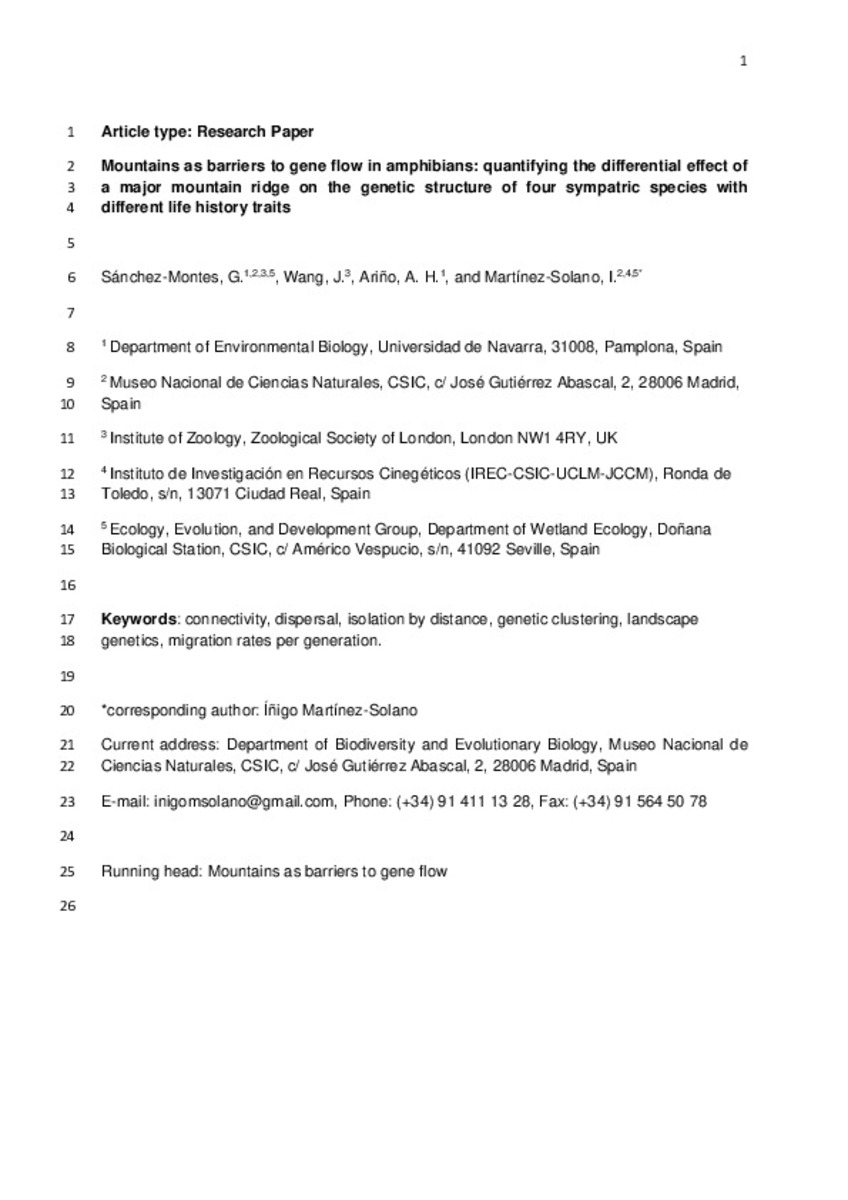Mountains as barriers to gene flow in amphibians: Quantifying the differential effect of a major mountain ridge on the genetic structure of four sympatric species with different life history traits
Keywords:
Materias Investigacion::Ciencias medioambientales
Connectivity
Dispersal
Isolation by distance
Genetic clustering
Landscape17 genetics
Citation:
Sánchez-Montes, G. (Gregorio); Wang, J. (Jinliang); Ariño-Plana, A.H. (Arturo Hugo); et al. "Mountains as barriers to gene flow in amphibians: Quantifying the differential effect of a major mountain ridge on the genetic structure of four sympatric species with different life history traits". Journal of Biogeography. 45 (2), 2018, 318 - 331
Statistics and impact
0 citas en

0 citas en

Items in Dadun are protected by copyright, with all rights reserved, unless otherwise indicated.











